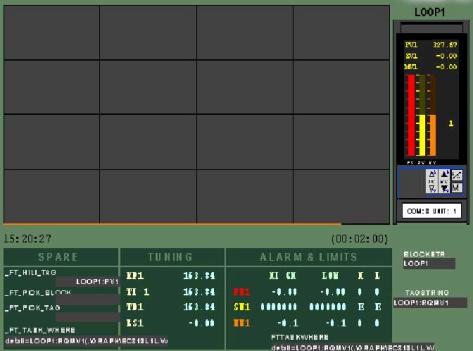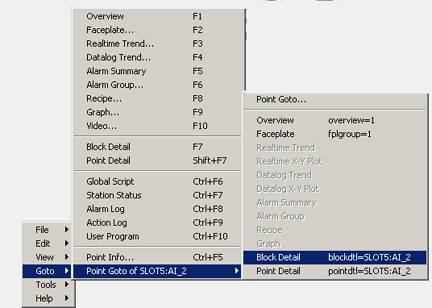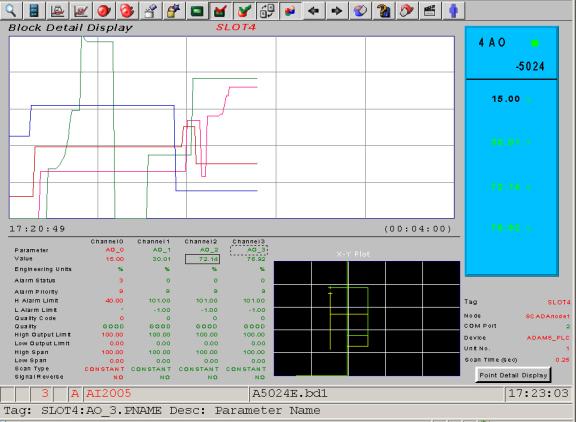
The Block Detail Display
allows a single display to be used to view many Block-type Tags of
the same Block type. All "Blocks" of the same Block Type can
be viewed using a single Block Detail Display. The classic use of a
Block Detail Display is for a PID Controller: Measurement,
Setpoint, Output, and tuning parameters for all PID blocks are
viewed using the one Block Detail Display. Some Device Types
in WebAccess come with pre-built Block Detail Displays. Users
can always build blocks and block type tags.

Figure 5.26 - Block Detail Display for a PID controller
Blocks are a common "productivity tool" that can reduce display-building requirements and allow users to commission new devices and IO without any display building. . A common application is in Building Automation where hundreds of similar VAVs are monitored. Only one Block Detail Display needs to be built for a VAV Type. The Block Detail Display can have multiple pages.
The Block Detail Display can be called from the Faceplate Group Display as part of the Display Hierarchy.
The Block Detail can be called up from any graphic by:
First, select a Tag with the left mouse button,
Then:
The F7 function key
Or, the
Right-Click
Menu in a web browser VIEW
Right Click -> Goto -> Block Detail
Or, the
Right-Click
Menu in a web browser VIEW (Figure
5.27)
Right Click -> Goto -> Point Goto -> Block
Detail
Or from the menubar in ViewDAQ Goto -> Point Goto -> Block Detail (Figure 5.27)
Or, a pushbutton with the <GOTO>BLOCKDTL= keymacro.

Figure 5.27 Point Goto - Block Detail
Block Detail graphics are created using the drawing tools provided in the DRAW, the Graphics Builder. Connections for animation are made using the Parameter name only. Screen Scripts can be generalized for use with Block Detail by referencing the Parameter Name. WebAccess will insert the Tagname when the Block Detail is called up.
Block Details displays can also be called up in VIEW by using the <GOTO>BLOCKDTL=blockname Keymacro and from the Point GOTO dialog box.
Block detail displays are also used for equipment displays. The ADAM 5000 PLC have a Block Detail display for each IO card (and an associated BLOCK for each IO Card).

Figure 5.28 - Block Detail Display for an IO card
The Block Detail Display only works with an IO Block-type with the same name. If the Block Type is PID1, then the Block Detail display must be named PID1.bd1. The Block Tag name can be anything (e.g. TIC101, PIC227, FlowControl).